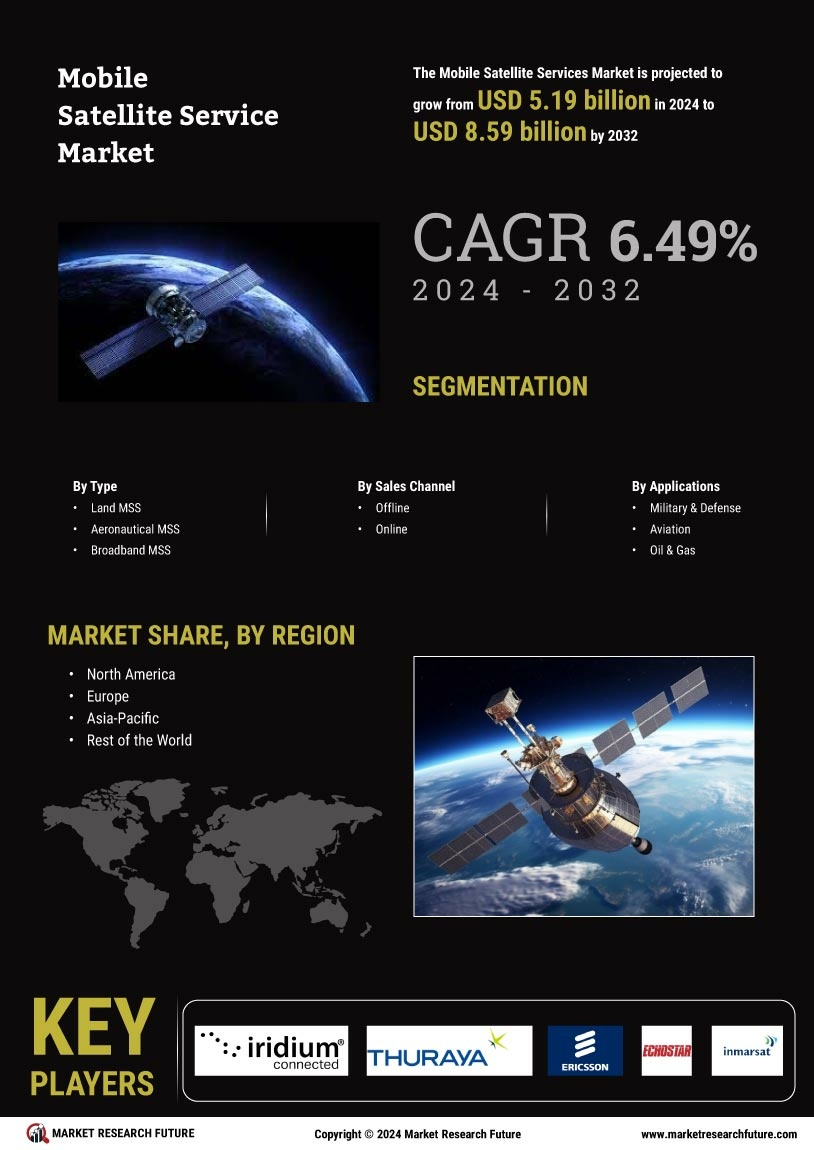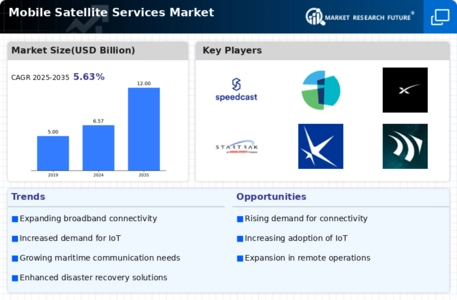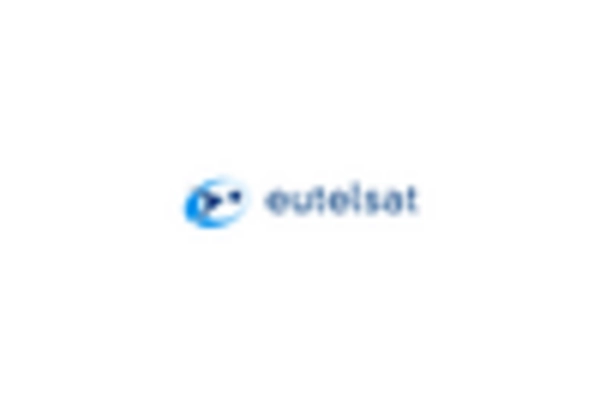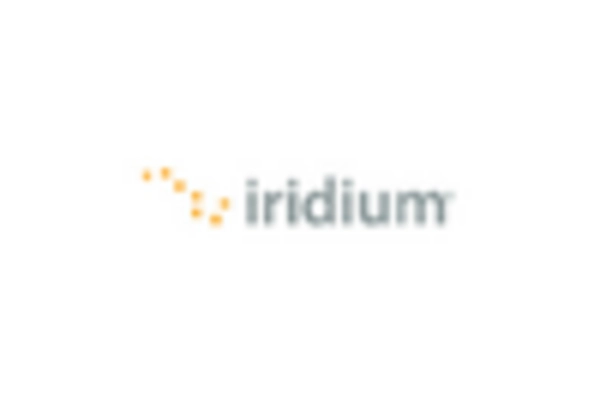Advancements in Satellite Technology
The Mobile Satellite Services Market is benefiting from rapid advancements in satellite technology, which are enhancing service capabilities and reducing costs. Innovations such as high-throughput satellites (HTS) and low Earth orbit (LEO) satellite constellations are transforming the landscape of mobile satellite services. HTS technology allows for greater bandwidth and improved data transmission rates, while LEO satellites offer lower latency and increased coverage. These advancements are expected to attract new users and applications, particularly in sectors such as maritime, aviation, and defense. As the technology continues to evolve, the Mobile Satellite Services Market is likely to see a diversification of service offerings, catering to a broader range of customer needs.
Rising Demand for Mobile Broadband Services
The Mobile Satellite Services Market is witnessing a rising demand for mobile broadband services, driven by the proliferation of smart devices and the need for constant connectivity. As consumers and businesses alike seek reliable internet access, mobile satellite services are positioned to fill the gaps left by terrestrial networks, particularly in remote and rural areas. Recent statistics suggest that mobile broadband subscriptions are on the rise, indicating a shift in consumer behavior towards mobile connectivity. This trend is likely to encourage service providers to enhance their offerings and invest in infrastructure, thereby propelling the growth of the Mobile Satellite Services Market. The convergence of mobile technology and satellite services presents a unique opportunity for innovation and expansion.
Growing Demand for Connectivity in Remote Areas
The Mobile Satellite Services Market is experiencing a surge in demand for connectivity solutions in remote and underserved regions. As urbanization continues to expand, rural areas often remain disconnected from traditional communication networks. This gap creates a significant opportunity for mobile satellite services, which can provide reliable internet and communication capabilities. According to recent estimates, the number of people living in remote areas is projected to increase, further driving the need for satellite-based solutions. The ability to deliver high-speed internet and voice services in these locations not only enhances quality of life but also supports economic development. Consequently, service providers are likely to invest in expanding their satellite networks to meet this growing demand, thereby propelling the Mobile Satellite Services Market forward.
Regulatory Support for Satellite Communications
The Mobile Satellite Services Market is experiencing favorable regulatory support, which is crucial for its growth. Governments and regulatory bodies are increasingly recognizing the importance of satellite communications in enhancing connectivity and supporting national security. Initiatives aimed at streamlining licensing processes and allocating spectrum for satellite services are being implemented. This regulatory environment encourages investment and innovation within the industry. Furthermore, as countries strive to meet their connectivity goals, partnerships between governments and satellite service providers are likely to emerge, fostering collaboration and expanding service reach. Such supportive measures are expected to bolster the Mobile Satellite Services Market, enabling it to thrive in an increasingly competitive landscape.
Increased Adoption of Satellite-Based Solutions in Disaster Management
The Mobile Satellite Services Market is witnessing heightened adoption of satellite-based solutions for disaster management and emergency response. Natural disasters, such as hurricanes, earthquakes, and floods, often disrupt traditional communication infrastructures, leaving affected areas isolated. Mobile satellite services provide a critical lifeline by enabling communication and coordination among emergency responders. Recent data indicates that The Mobile Satellite Services Market is expected to grow significantly, with satellite services playing a pivotal role in enhancing response times and operational efficiency. As governments and organizations recognize the importance of robust communication systems during crises, investments in mobile satellite technologies are likely to increase, thereby driving growth in the Mobile Satellite Services Market.


















Leave a Comment